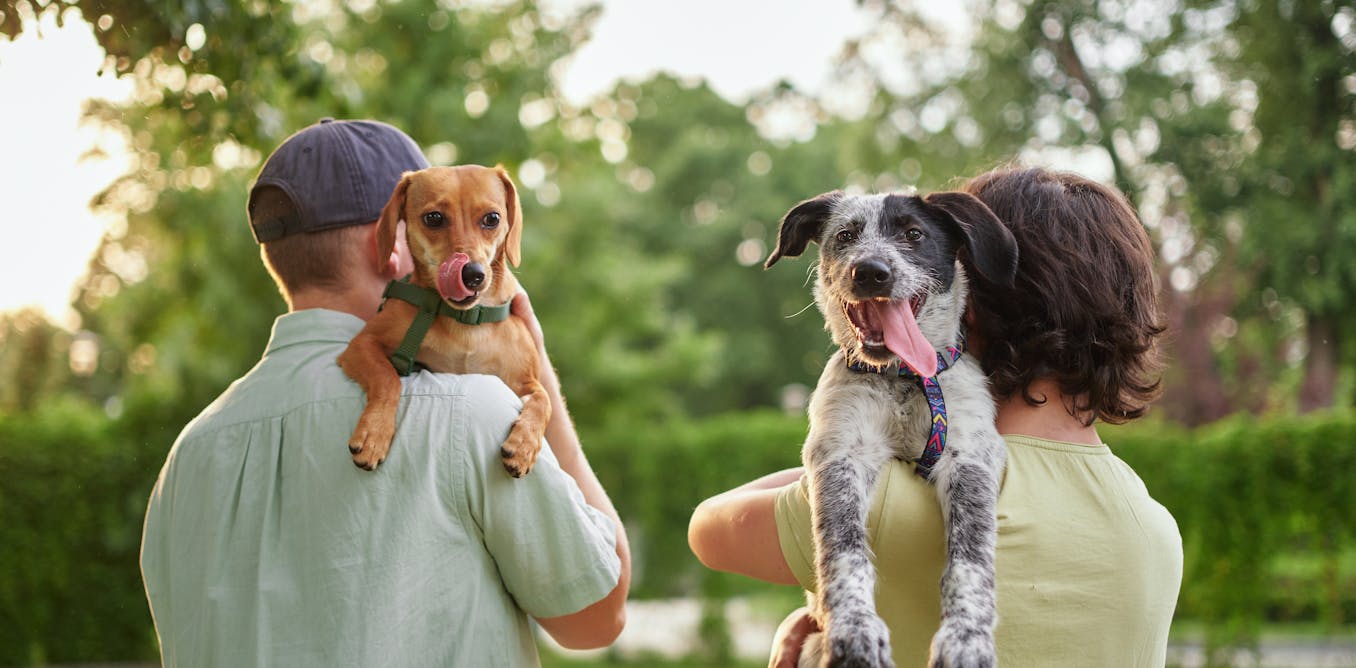Now Reading: Do people really resemble their dogs?
-
01
Do people really resemble their dogs?
Do people really resemble their dogs?

Many dog owners ponder whether they share common traits with their furry companions, such as a calm demeanor, a friendly nature, or even a touch of stubbornness. The notion that humans and dogs bear resemblance to each other is not merely a jest. In reality, some researchers have delved into this inquiry.
As an expert who delves into various facets of the human-animal bond and works closely with individuals grieving the loss of a pet, I appreciate the significance of these relationships. I am particularly intrigued by how perceived similarities and emotional bonds with dogs can influence the quality of the bond.
It is crucial to comprehend the current knowledge about likenesses between humans and dogs, as this can shed light on whether perceptions of similar physical and personality traits impact the quality of the bond individuals share with their canine companions.
Research on perceived similarities between humans and their dogs aims to ascertain the accuracy of such perceptions and how they impact the relationship between individuals and their canine companions.
A recent analysis consolidates findings from 15 empirical studies that explored similarities between dog-human pairs, both in appearance and personality. Concerning personality traits, the results indicate that dogs and their owners may exhibit similar characteristics, such as levels of extroversion, anxiety, and sociability.
Furthermore, some individuals appear to select dogs that bear a physical resemblance to them, particularly when opting for a purebred dog. Notably, a correlation exists between women’s hair length and their preference for dogs with similar ear length, with short-haired women showing a preference for short-eared breeds.
Another study suggests that the likeness between owners and their dogs may be particularly evident in the eye region. Additional studies suggest a positive association between owners’ body mass index (BMI) and their dogs’ degree of overweight, potentially linked to a shared lifestyle.
Many of these studies rely on questionnaires completed by the owners themselves. Some may argue that the findings solely reflect the owners’ perceptions. However, a team of researchers tasked participants who had never met the dog-owner pairs with matching photos of dogs and their owners based on perceived similarities. Interestingly, the participants were able to accurately pair most of the dog-owner duos, indicating that similarity may not solely be based on the owners’ perceptions.
The phenomenon of perceived similarities between humans and dogs may be rooted in our evolutionary history, as we tend to gravitate towards like-minded individuals. In evolutionary contexts, cohesive and predictable groups enhanced cooperation and survival, influencing our relationships with others. Similar mechanisms shape how we relate to dogs.
While personality similarities between individuals and their dogs may stem from emotional exchanges, mutual regulation, behavioral reinforcement, and observational learning, compatibility remains a crucial element in fostering positive relationships with dogs. Attachment style and aspects of the human’s personality also play significant roles in these bonds.
Ultimately, while perceived similarities can strengthen relationships, compatibility and mutual understanding are pivotal in building meaningful connections between humans and their canine companions.






